- Recent Posts
- Grooming & Personal Care
- Hair Care
- Squatch Men: Lifestyle
- The Great Outdoors
- Natural Living & Health
- Man Stuff
- Ultimate Guides
Tue, Aug 11, 2015• 10:00• The Great Outdoors
Wilderness First Aid

It’s impossible to quantify the variety of methods available for inflicting injury on yourself or your hiking partners. From insect bites and stings to broken bones the key to wilderness first aid is proper management of resources and the ability to identify what resources are at hand. When faced with injury in a remote location, you need to use whatever you can to improve your position. This creativity maximizes your odds of survival, or if it’s not that dire, then minimizes the amount of damage the injury will cause before proper treatment can be obtained.
The Red Cross has a useful and far more comprehensive pocket guide that is excellent for further reference.
Bee stings:
https://flic.kr/p/enNKzS
If you’re not man enough to just walk it off (unless you are allergic to bee stings) then there are a few things beyond that benadryl pill in your hiking first aid kit that you can try in the field after a bee sting. If your sasquatch buddy offers to pee on it as a remedy, do not accept! This is a horrible prank and you won’t get the smell out for weeks…though Dr. Squatch’s Gold Moss Scrub has been known to cut that time by half.
If you have an allergy to bee stings you should be hiking with an Epipen. This treatment is temporary and will wear off before your body’s histamine reaction so evaluation at a hospital ASAP is always necessary. Stab yourself in the thigh, take some benadryl, and get in touch with aid.
Assuming you aren’t allergic you have more options. If you were stung by a bumble bee then your first step is to remove the stinger by gently scraping it out with a fingernail or carefully with your knife; satisfied in the knowledge that your assailant died a gruesome death after attacking you…even though you probably deserved it. Hornets and wasps will not leave a stinger behind so begin treating the sting by cleaning it and use something to cool the area. If you use river water, cold rocks, or mud be sure to clean the area after to avoid infection. Lavender oil, crushed garlic, and honey can be applied to the injury to treat the swelling, relieve the itching, and prevent infection…though if you’re going after honey in the wild that’s probably why you got stung in the first place.
Snake bites:
https://flic.kr/p/8HZhPW
The best way to treat a snakebite is to be aware of your surroundings, watch where you step, and avoid the bite in the first place. Failing that, it is important, again, to get to treatment ASAP. If you know it wasn’t a poisonous snake then you can treat it as you would a bee sting, infection is still a concern. If possible, take a picture of the snake that bit you. If you were just bitten, you’re obviously not an expert snake wrangler so don’t push your luck by trying to capture it…it’s not worth the second bite. If a wheal begins to develop and grow around the bite, mark the circumference and record the time; this will be useful information for the folks who end up treating the wound.
Ideally aid will come to you while you rest with the wound below your heart and covered. Remove any jewelry past the bite so it doesn’t get swollen in place. If help isn’t coming to you, splinting the bitten area can help protect it and minimize the utilization of the surrounding muscles slightly reducing circulation of the venom. Don’t do anything crazy like suck on or cut the wound, you’ll only make the resulting infection that much worse and the venom is well into your system already anyway.
Broken Limbs/Twisted joints:
If Squatch drops a rock on your leg, you’re going to need to find what you have available to fashion yourself a splint. Use clothing, branches, trekking poles, shoe laces, whatever you have available to splint the break to minimize movement. Splints should be attached securely but not tight enough to interfere with circulation, if the limb starts tingling it’s too tight. With small bones you may attempt to set the break once before splinting but anything large and you’re not going to be successful. Moving a femur fracture, for example, could result in damage to the femoral artery which is game over no matter how large your moustache is. Again, if help is coming your way the more rest you get with that limb elevated the better, and keeping it cool will help moderate the inflammation.
Puncture wounds (ice axe, bear teeth,…):
If a foreign body is stuck in your body then it is generally the best course of action to leave it in place unless doing so will cause more damage or prevent you from getting to aid. Removing such items will make the bleeding much worse overall. Bleeding should be addressed with direct pressure and elevation. If that doesn’t successfully control the bleeding, and you know how to find pressure points, you can decrease the blood flow by applying pressure on arteries upstream of the bleed. Use whatever cloth you can find to dress the wound and don’t remove it or you’ll have to start that clotting process all over again. Tourniquets are a good last option if a wound will not stop bleeding. Limbs can survive quite a while in these circumstances and if you bleed out then you won’t need that limb anyway…but that’s definitely a tool to leave in the bag until it’s absolutely necessary. Belts make decent tourniquets, as do anything else that can be wrapped around and cinched down completely and secured in place. If you go this route know that you are committed. Record the time you apply the tourniquet and do not remove it yourself.
Ticks should be removed carefully with a pair of tweezers. Make sure to check that you pull out the whole insect before discarding it and clean and dress the site as you would any other puncture wound. Don’t try to burn the tick out or you’ll just have a burn to treat on top of everything else.
https://flic.kr/p/aGKofD
Burns:
Burns, no matter how severe, should be kept as clean and dry as possible. Ideally, if the burn is bad enough that you want it treated at a hospital, don’t put any salves or ointments on it because they will have to be cleaned off before treatment can begin. If you plan on taking care of it yourself and can find an Aloe plant on your hike, applying some of the gel will be soothing and help healing. Try to keep bad burns covered loosely with sterile gauze. Your body’s perimeter has been breached and infection is your biggest threat.
Hypothermia:
Not all wilderness injuries are traumatic. Hikers caught in inclement weather can be very negatively affected by hypothermia even when the temperature is above 60 degrees Fahrenheit. Get dry and get warm. If it’s not too severe, eating a warm meal or three can help quite a bit. Make yourself a blanket out of some dry vegetation, cuddle up with that hairy Sasquatch (nobody has to know), and next time you go out make sure you dress more appropriately.
The essence of survival is being prepared — mentally, physically, and having the correct equipment — and using all available resources when the circumstances call for creative problem solving. Doing what you can in a pinch can drastically reduce injury recovery time or even save a life.
Related Posts
WTF are Plant Butters?
Wed, Jan 22, 2025• Grooming & Personal Care Natural Living & Health
You might be wondering, “WTF are “plant butters”? Is that like vegan “I can’t believe it’s not butter?”. No, but we’re glad you asked. These rich, ...
Read More5 Protips For A Better Shave
Fri, Jan 03, 2025• Grooming & Personal Care
Let’s be real, shaving is a combat sport. I mean you’re dragging a sharp blade across your face on the reg. Nicks, irritation, tight, dry skin afte...
Read MorePucker Up: Lip Care For Men 101
Fri, Dec 20, 2024• Grooming & Personal Care
Let’s face it (see what we did there?)—lip care is for everyone. Whether you're battling the elements, exploring the great outdoors, or just living...
Read MoreHow To Choose the Right Cool Weather Scent
Mon, Dec 16, 2024• Grooming & Personal Care
No matter where you’re at, we deep into the cool and cold weather (well, not you Hawaii) and that means it’s time to evaluate your scent seasonalit...
Read MoreCategories
Recent Posts
-
WTF are Plant Butters?
Wed, Jan 22, 2025
-
5 Protips For A Better Shave
Fri, Jan 03, 2025
-
Pucker Up: Lip Care For Men 101
Fri, Dec 20, 2024
-
How To Choose the Right Cool Weather Scent
Mon, Dec 16, 2024
-
The Top 8 Holiday Movies Of All Time
Thu, Dec 05, 2024




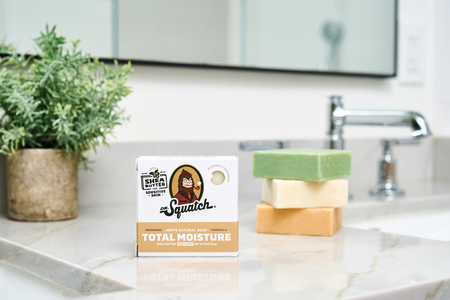
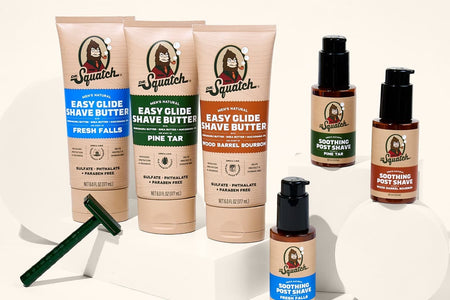
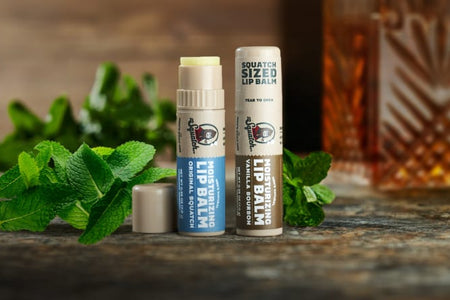


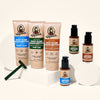
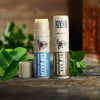


Leave a Reply
Your email address will not be published. Required fields are marked *